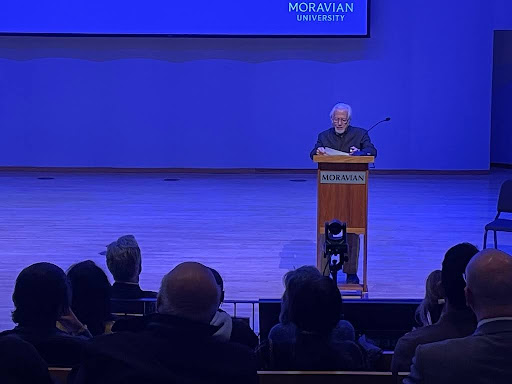Meanwhile, in Ireland: The Winter Solstice (Yule)

Irish Mummers, from every-day-is-special.blogspot.com
As the darkness reaches its peak and Christmas draws ever closer, traditions from the Irish Winter Solstice celebration become many of the traditions of Christmas in modern day, both within and outside of Ireland.
In ancient days, the Winter Solstice, Meán Geimhridh (pronounced Mawn G+ev+ree), meaning midwinter, or grianstad (pronounced Gree+awn+stod), meaning “sunstop,” was one of the key points of the year in which the veil that divides our world and the supernatural Otherworld was at its thinnest point. Similarly, because it was the point of the year when the world was at its darkest point, light was at the core of the festival.

At dawn on the Winter Solstice, people from all over Ireland would come together and gather at the Newgrange, a massive passage tomb that predates both Stonehenge and the Pyramids of Giza. The Newgrange predates even the arrival of the Celts in Ireland. This ancient structure was constructed in such a way that it perfectly lined up with the sun. The only time the sunlight would enter through the skybox window above the door and completely flood the inner chamber was at dawn on the Winter Solstice. For more information on the Newgrange itself, read the Meanwhile, in Ireland article on the Newgrange here. Likewise, fire was a major part of the festivals of ancient Ireland, even ones themselves not considered as “Fire Festivals,” or the four most crucial points of the year, themselves. From the 19th to the 31st of December, the people of Ireland believed that the sun stood still. It was thought that the flickering of a burning log or, later on, the flame on a candle would persuade the sun to begin moving again. Light meant warmth after the cold of winter, and warmth meant life. This tradition melded with similar Germanic traditions of Yule to become what is referred to as a “Yule Log.”

In the Irish tradition, the log would be cut from a pine or birch tree. Originally they were burnt entirely in a hearth, but later on, a trio of candles would be placed on top of the log and burnt. These candles would come in one of two combinations – Red, white, and green, or red, white, and black. The former was a representation of the King of Holly, white for light, and the King of Oak. The latter represented the ancient goddess of fire, Brigid, or Bríd (pronounced like Breed or Breej), who held the role of actually bringing the sun itself back to life and, with it, bringing back the summer.

In Celtic tradition, it was believed that a great battle would occur twice every year, between two twin kings. One was the King of Oaks, who disguised himself as a robin, and the King of Holly, who disguised himself as a wren. During the Winter Solstice, with the other battle occurring on the Summer Solstice, the King of Oaks, who rules the land during the summer, reawaken from his sleep and fight the King of Holly, who rules the land during the dark period of winter. The King of Oaks would emerge victorious, and with his victory, the darkness would begin to dissipate, and the winter would wane. Still, the King of Holly can be attributed back to the idea of life. Holly and ivy, as evergreens, became symbols in Ireland of eternal life and held power. They showed that even when the darkness came, there was hope for life, joy, and restoration. Darkness did not mean total death and decay. Both holly and ivy were considered among the sacred trees, or trees which had various supernatural properties, by the Druids. Bringing evergreens inside, in turn, was thought to bring the hope of life with it. The green of the evergreen was often paired with red, which represented the blood that flows through the body – another symbol of life.

Mistletoe is another plant popular around Christmas time. It too originated from an ancient Irish tradition. Growing from the bows of the chief tree among the sacred trees, the oak, the Druids, in a sacred ritual, would cut sprigs of it. Like holly and ivy, mistletoe grows green in the winter. It was considered a symbol of fertility. Mistletoe was believed to be so sacred that it could only be cut in a specific ritual done by the Druids. According to a written account by the Greek historian Pliny the Elder, who once witnessed such ceremonies being performed, a Druid wearing white would cut the sprig of mistletoe with a special golden sickle and catch it in a cloth of the same pure white. The sprig was not to touch the ground, or it would become corrupted and lose its power. A prayer was said over the mistletoe as two white bulls were sacrificed. Mistletoe, to the Celts, was incredibly powerful. In addition to being a representation of fertility, it also had the abilities to cure pretty much any ailment, especially in regards to infertility.
More recent traditions from Ireland carried into the mainstream celebration of Christmas, even long after the days of the Druids. For one thing, light continued to be an important part of Christmas. Beginning in the Medieval era, when Christianity arrived in Ireland, it became traditional to light a candle and place it in the window on Christmas eve. It was believed that this light in the window would guide Mary and Joseph, and show that one’s home was open to them as they traveled to Bethlehem, prior to the birth of the Christchild. As trees became popular, returning to the tradition of bringing evergreen into one’s home, placing mirrors and candles among the bows came with it to welcome in the light. This would become the tradition of decorating with reflective glass baubles, tinsel, and strings of electric lights in modern day.
Following Christmas Day itself, further traditions that “crossed the pond” as it were then happened. Wren Day, or Lá an Dreoilín (pronounced Lay awn Dray+leen), is traditionally held on the 26th of December. This is also the festival of Saint Stephen, the first Christian Martyr.
The name “Wren Day” to many is likely to be unfamiliar; however, the tradition of Mumming perhaps does ring more of a bell. Brought over by Irish immigrants, the practice of Mumming became a cultural practice in cities like Boston and Philadelphia. To this day, the Mummers Day Parade continues to be held in the latter city, though not on the traditional “Wren Day.”

Traditionally, this practice began during the Penal era in Ireland, which lasted from 1695 to 1869. A wren was chosen for a few reasons. Historically, it represented the sun and was considered to be the king of all birds. During the Penal era, however, a group of Irish rebels snuck into a British encampment occupying a small town. But before they could ambush the sleeping soldiers there, a flock of wrens was said to land on the soldiers first and begin pecking at them, waking them up and thus alerting them to the impending ambush. The wren then became known as the “Devil’s bird” because of this incident.
Done in remembrance of both Saint Stephen and the brutality faced by the Irish Catholics during the Penal era and the failure of the attempt made by rebels to free their town from occupying military forces, the bird would be hunted down, captured, and then stoned to death. Its body was then strapped to the pole and paraded through the streets.
Holly is now used in place of the wren because of its symbolism. In addition to being an evergreen, and the king from folklore that also disguises himself as a wren, as mentioned, holly represents peace and happiness, as well as joy and celebration. Ribbons, colorful rags, or colored strips of paper would be tied to the branches of these holly bushes that are carried.

Those processing in these parades are the Mummers, and they have a number of different roles. Also known as “Strawmen” because of wearing costumes made of straw, or “Wrenboys” because of the old tradition with the wren on a stick, people of a given town would pick up instruments and begin processing through the streets with the wren, now holly bush, at the head of the march. They would dance and play merry music as they went, stopping at the homes of their fellow townsfolk. There, more dancing would occur, with the residents joining the Mummers.

Despite rather grim origins, the tradition of Mumming has now become a joyful occasion full of mirth and goodwill. In Ireland itself, the tradition has largely faded, though it remains alive in the United States, as well as through the continued tradition in Ireland of visiting your neighbors houses for Christmas.
Irish Christmas traditions conclude with the end of the Christmas season on 6 January. Known as Women’s Christmas, or Nollaig na mBan (No+Leg na Bawn), Little Christmas, or Old Christmas, this celebration that is still celebrated in Counties like Kerry and Cork, sees women being celebrated. On this day, traditionally, women would be given total leave from all household duties and any childcare, and the men would take up these tasks entirely. Of course, this stems from the days when women were the primary homemakers and child-rearers; however in more recent times, it continues to be a day to celebrate women.

Many gather in pubs and enjoy each other’s company and conversation. Additionally, 6 of January held another significance. It was, and in some places still is, considered bad luck and will bring you misfortune if you take down your Christmas decorations before 6 January. In short, the answer to the age-old question of how long should Christmas decorations be kept up for is at least until 6 January.







Kathleen Dixon • Dec 9, 2023 at 10:29 pm
I am looking forward to sitting back in my most comfortable chair with my feet up , and reading this book!